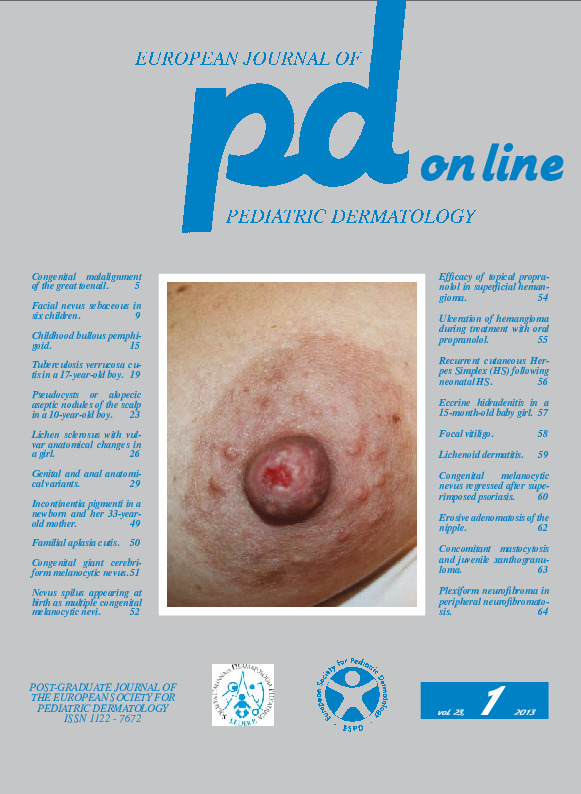Incontinentia pigmenti in a newborn and mother
Downloads
How to Cite
Bonifazi E. 2013. Incontinentia pigmenti in a newborn and mother. Eur. J. Pediat. Dermatol. 23 (1): 49.
pp. 49
Abstract
Incontinentia pigmenti is a hereditary disease that affects the skin, sometimes the eye, the central nervous system and the skeleton (1). It is transmitted as a dominant trait with the X chromosome and is usually lethal in the male (2). Its gene locus has been mapped to Xq28 (3) and the responsible mutation usually consists of a deletion of the NEMO gene. The skin lesions are initially vesico-bullous, then warty, hypermelanic and finally, sometimes atrophic: not always the four stages of the disease follow this chronological order and especially notm always pigmented lesions, that give the name to the disease, occur in site of previous exudative or warty lesions. Besides eosinophilia, characteristic is the histological evidence of hyaline bodies representing keratinization of isolated cells.Keywords
Incontinentia pigmenti

